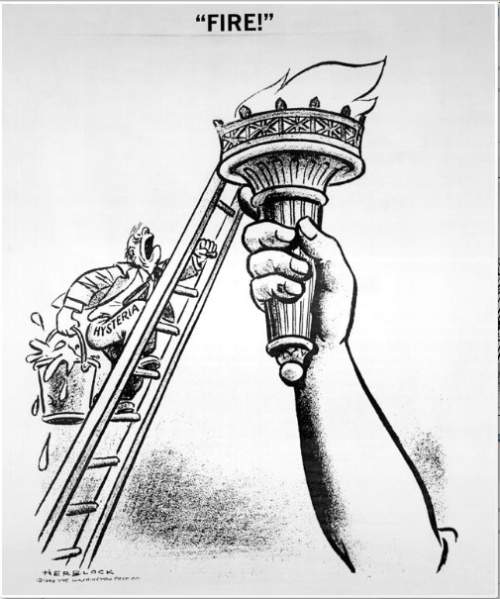
Document 1- Excerpt from Indians are Us, by Ward Churchill (1994)
In 1493 Columbus returned with an invasion force of seventeen ships, and was appointed by the Spanish Crown as “governor of the Caribbean islands and the mainland” of America, a position he held until 1500. Setting up shop on the large island he called Espanola (today Haiti and the Dominican Republic), he quickly developed policies of slavery (encomienda) and organized slaughter against the native Taino population. Columbus’s programs reduced Taino numbers from as many as eight million at the beginning of his rule to about three million in 1496. Perhaps 100,000 were left by the time of his departure. His policies remained and by 1514 the Spanish census (population count) of the island showed barely 22,000 Indians remaining alive. In 1542, only two hundred were recorded. Thereafter, they were considered extinct, as were Indians throughout the Caribbean Basin, a total population which totaled more than fifteen million at the point of first contact with Columbus was now gone.
Document 2- Excerpt from Columbus, Hero or Villain by Michael Pucci (1997)
Contrary to what some say, Columbus was a courageous man. He challenged popular opinion when nobody else believed him. He did what no other explorer dared to do. He was determined to find the route to Asia when everybody else was afraid to. American Indian activists criticize Columbus for bringing disease to America and act as if that was his entire goal when setting sail from Europe. It is ridiculous to claim that he knowingly brought over these sicknesses and purposely infected people with it. Columbus is also slammed for owning slaves. What leader in 1492 did not own slaves? The fact that Columbus did own them is irrelevant to any issue. Columbus did not cause environmental destruction either. He paved the path for the settlement of America. Columbus was not on a mission of destruction. Rather, he was on a quest for paradise.
1- What is the point of view expressed in both documents concerning Christopher Columbus’s interactions with the indigenous people? Provide evidence from the documents to support your response.
2- Which document portrays a bias point of view regarding Christopher Columbus’ dealings with the indigenous people? Explain why.
3- What type of sources are both documents? Explain why.

Answers: 2
Other questions on the subject: History

History, 21.06.2019 23:00, macybarham
What changes did japanese militarists make when they came to power?
Answers: 2

History, 22.06.2019 09:00, esekvng4342
Legally, the decision to try a child (age 13 - 17) as an adult is mostly based upon which of these? a) the severity of the crime b) the influence of the family c) the number of past offenses d) the grades of the accused child
Answers: 1

History, 22.06.2019 16:00, querty2400
Which of the following activities of the caddo resemble modern culture? select all that apply. pottery making intricate carving mound building tattooing piercing
Answers: 1

Do you know the correct answer?
Document 1- Excerpt from Indians are Us, by Ward Churchill (1994)
In 1493 Columbus returned with an...
Questions in other subjects:



Mathematics, 19.12.2020 06:40

History, 19.12.2020 06:40


Mathematics, 19.12.2020 06:40

Geography, 19.12.2020 06:40


Physics, 19.12.2020 06:40

Mathematics, 19.12.2020 06:40








